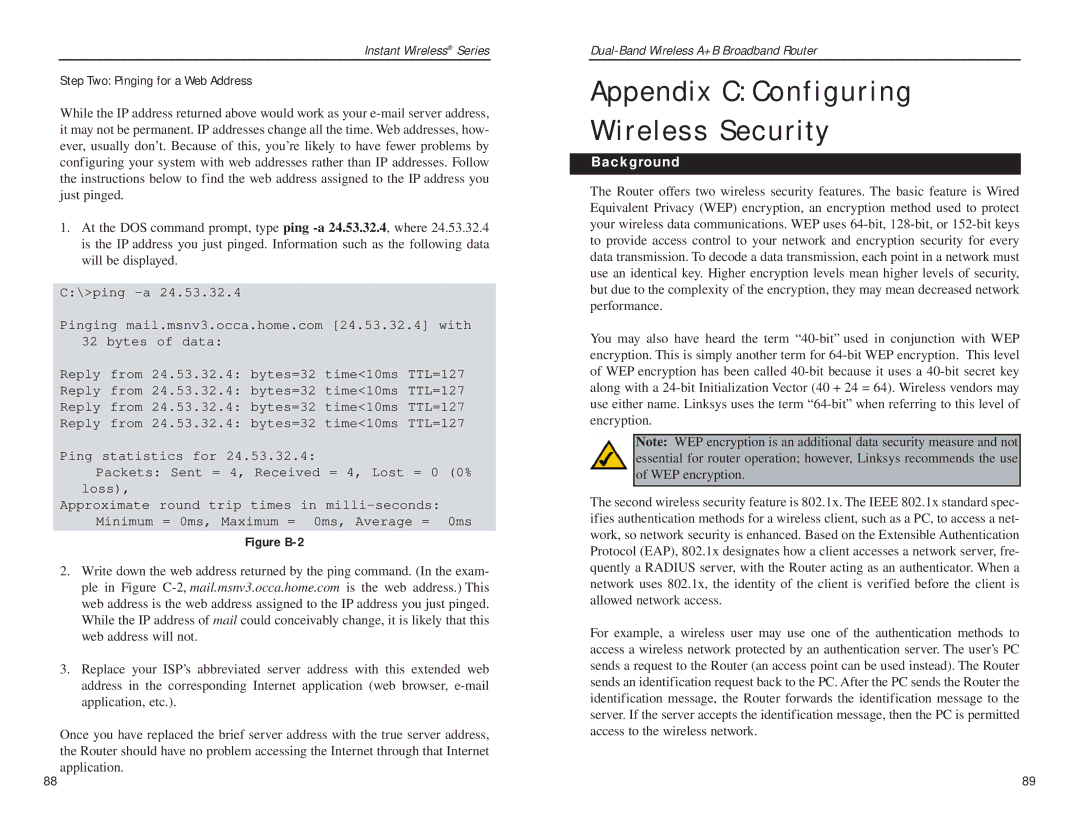
Instant Wireless® Series
Step Two: Pinging for a Web Address
While the IP address returned above would work as your
1.At the DOS command prompt, type ping
C:\>ping
Pinging mail.msnv3.occa.home.com [24.53.32.4] with
32 bytes of data:
Reply from 24.53.32.4: bytes=32 time<10ms TTL=127
Reply from 24.53.32.4: bytes=32 time<10ms TTL=127
Reply from 24.53.32.4: bytes=32 time<10ms TTL=127
Reply from 24.53.32.4: bytes=32 time<10ms TTL=127
Ping statistics for 24.53.32.4:
Packets: Sent = 4, Received = 4, Lost = 0 (0% loss),
Approximate round trip times in
Figure B-2
2.Write down the web address returned by the ping command. (In the exam- ple in Figure
3.Replace your ISP’s abbreviated server address with this extended web address in the corresponding Internet application (web browser,
Once you have replaced the brief server address with the true server address, the Router should have no problem accessing the Internet through that Internet application.
Appendix C: Configuring
Wireless Security
Background
The Router offers two wireless security features. The basic feature is Wired Equivalent Privacy (WEP) encryption, an encryption method used to protect your wireless data communications. WEP uses
You may also have heard the term
Note: WEP encryption is an additional data security measure and not essential for router operation; however, Linksys recommends the use of WEP encryption.
The second wireless security feature is 802.1x. The IEEE 802.1x standard spec- ifies authentication methods for a wireless client, such as a PC, to access a net- work, so network security is enhanced. Based on the Extensible Authentication Protocol (EAP), 802.1x designates how a client accesses a network server, fre- quently a RADIUS server, with the Router acting as an authenticator. When a network uses 802.1x, the identity of the client is verified before the client is allowed network access.
For example, a wireless user may use one of the authentication methods to access a wireless network protected by an authentication server. The user’s PC sends a request to the Router (an access point can be used instead). The Router sends an identification request back to the PC. After the PC sends the Router the identification message, the Router forwards the identification message to the server. If the server accepts the identification message, then the PC is permitted access to the wireless network.
88 | 89 |
